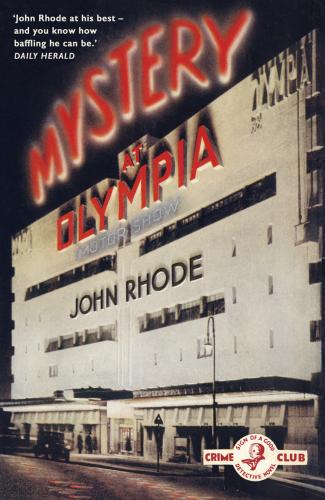The Coroner reached the court punctually on time, and the proceedings began without delay. He was sitting with a jury of seven, and when these had been sworn, the witnesses were called.
The first was Philip Bryant, who described himself as a solicitor, and gave his address as 500 Lincoln’s Inn Fields. He had seen the body of the deceased, and identified it as that of his uncle, Nahum Pershore. Mr Pershore was fifty-five, and lived at Firlands, Weybridge. He was a retired builder.
In reply to the coroner’s questions, Philip stated that he had last seen his uncle on the previous Sunday evening. He had seemed in very good spirits, but not quite in his usual robust health. Asked what reason he had for saying this, Philip replied that he had noticed at dinner that his uncle did not eat as much as usual. ‘I asked him tactfully after dinner if anything was the matter with him, and he told me that for the last couple of days he had been suffering from loss of appetite, with headaches and slight pains in the stomach.
‘I suggested to him that he had better see his doctor, but he told me that it was nothing. He attributed his symptoms to indigestion, from which he had already suffered some time previously. I knew that he was in the habit of taking some patent medicine for this, the name of which escapes me. I asked him if he derived any benefit from it, and he told me that he did, and that he would take an extra dose that evening.’
‘Did he appear in any way mentally depressed at his condition?’
‘Not at all. He was as cheerful as I have ever known him, and spoke of going for a Mediterranean cruise in a few weeks’ time.’
Philip stood down and the police surgeon was called. He gave his name as Cecil Button. He had been instructed to perform a post-mortem examination of the body of the deceased, and had done so that morning.
External examination had revealed no bruises or contusion of any kind. But, upon removing the clothing, a strip of linen, which appeared to have been torn from a shirt, was found tied round the right thigh. Upon removing the strip, it was found to be spotted with dried blood, not in any considerable quantity. Examination of the place from which the strip had been removed revealed three punctures, and on probing them, a corresponding number of pellets were found embedded in the flesh. These pellets had been removed. Doctor Button passed a small cardboard box up to the coroner for his inspection.
The Coroner opened the box and looked at its contents. ‘These appear to be shot from a twelve-bore cartridge,’ he remarked. ‘Is it your opinion, Doctor Button, that these injuries contributed to the death of the deceased?’
‘I hardly think that is possible,’ the doctor replied. ‘By the appearance of the very slight wounds, I formed the opinion that they had been sustained at least forty-eight hours before I examined the body, and possibly longer. They showed no signs whatever of being septic, and their position was such as to cause no danger, but only slight inconvenience. I noticed also that the skin in their vicinity was stained with iodine.’
‘Did you form any opinion as to how these wounds had been inflicted?’
‘They appeared to me to have been caused by a shot-gun, fired at considerable range. The pellets were widely scattered, the punctures being rather more than two inches apart. And the penetration of the pellets into the tissues was not more than an inch.’
‘You found no other sign of external injury?’
Конец ознакомительного фрагмента.
Текст предоставлен ООО «ЛитРес».
Прочитайте эту книгу целиком, купив полную легальную версию на ЛитРес.
Безопасно оплатить книгу можно банковской картой Visa, MasterCard, Maestro, со счета мобильного телефона, с платежного терминала, в салоне МТС или Связной, через PayPal, WebMoney, Яндекс.Деньги, QIWI Кошелек, бонусными картами или другим удобным Вам способом.
